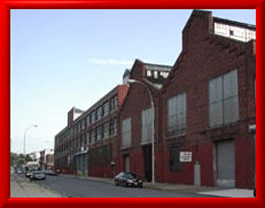

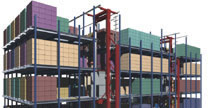 |
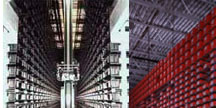 |
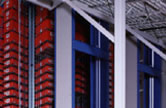 |
|
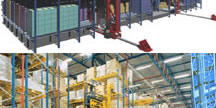 |
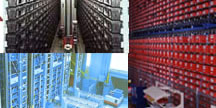 |
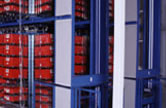 |
|
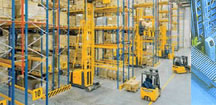 |
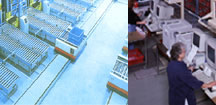 |
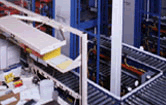 |
This was my first step into the world of Industrial Automation at age 19. While at F&B CECO I found an employment agency willing to back me up and market me to big firms that needed people with electronic and mechanical abilities. My agent landed me a job interview with a company called Supreme Equipment & Systems Corp in Brooklyn NY. This company built Automated Storage/Retrieval Machines, which were really large pallet or drawer storage racks with a robotic retrieve/return platform operating in the aisle between racks. The platform had a grab hook that could grab either to the right or left. The platform was mounted on a vertical column and was driven up and down through sprockets driving a counter weighted roller chain. The entire column moved horizontally on a track throughout the length of storage rack. I was hired on the spot after the interview to become a field service technician and brought in for several weeks of on the job training. Back then as a hobby I was very into bread boarding my own digital circuits for use with my Radio Shack TRS-80 Personal Computer. Because of this experience the Engineers who interviewed me were impressed by my knowledge of gate circuits and Boolean logic.
Thus, after my training they assigned me to their top territory in the New York area. I had part of Manhattan and all of Brooklyn, Queens, and Long Island. I had to do the field service on the machines that were installed at Con Ed, Pan Am, Grumman Aerospace, Sperry Gyroscope, East Nassau Medical Group, Nassau County Clerk, Mount Sinai Hospital, Lutheran Medical Center and several other lesser known sites.
At the industrial sites the AS/R machines were linked to MRP systems via a DEC PDP 11 Mini Computer through an RL11 interface card. The AS/R machines were controlled by a new SBC (Single Board Computer) from Zilog based on the Z-80 processor. The MRP system would send the coordinates for the storage location of the desired parts to the AS/R through the SBC. The SBC would the send commands to the X, Y, and Z axis motors of the robot to go and fetch the bin with the desired parts and bring the bin to a parts picking station at the front of the machine. Once there an operator would pull the desired quantity of parts and then signal via keyboard that the order is complete. The robot would restore the bin to its original location and go get the next one.
These systems let companies like Grumman, Sperry, Pan Am, and Con Ed maintain very tight control over the in flows and out flows of expensive parts and components used in their operations so as to keep a tight control on costs.
In the medical facilities, these machines were set up as giant file cabinets and used to store medical records in a similar fashion. The facilities that used these machines were very large and had a large patient base, so a system like this was needed to consolidate control of the paper records.
I only stayed on this job for a little over a year; because I found myself driving over 200 miles a day to clear jams and working 80+ hours a week, just to keep up the the service calls. The columns were made of bent formed sheet metal shapes with x bracing. The tall ones would wave back and forth like a bean stalk when they stopped. While the unit was wavering it would try to restore the bin on the platform back into its location and jam against the rack structure, and come to a dead stop on a tripped motor overload breaker. The next step was to call me in, to climb up into the machine to clear the jam, reset the breaker and let it go again. This happened way too many times. I told the mechanical engineers at Supreme they had to improve the rigidity of the column structure to eliminate this problem. They did add overhead stabilizer cables, but to no avail. They needed to add more meat on the frame, but that cost money, and the company did not want to spend more money on raw materials to improve the design.
One day after my beeper was going off like crazy I just quit. I wanted my life back. Right after I turned my tools in that day I walked right next door to the S&S machinery Co. to ask for job. The foreman came out to the lobby introduced himself gave me a tour of the place and I was hired on the spot to become a Machine Tool Repair Technician.
After that each day I would pass Supreme Equipment on the way to work and I watched as little by little less and less employees were reporting for work at Supreme Equipment. Within 3 years the entire company went out of business. By the time Supreme closed its doors for good I was building CNC machine tools at S&S Machinery Co. based on electric systems of my own design right next door to the place where the engineers who said I did not know what I was talking about when it came to machine design. Now they were unemployed and I was building machines with electronics technology light years ahead of anything they ever used, just a few hundred feet away from where they used to work, and I did not even have my high school Diploma yet back then.